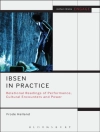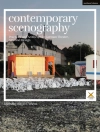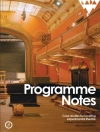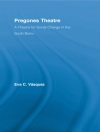Considers the ways in which Alfred Hitchcock adapted and transformed a variety of literary works—novels, plays, and short stories—into film.
The adaptation of literary works to the screen has been the subject of increasing, and increasingly sophisticated, critical and scholarly attention in recent years, but most studies of the subject have continued to privilege literature over film by taking the literary sources as their starting point. Rather than examining the processes by which a particular author has been adapted into a diversity of films by different filmmakers, the contributors in Hitchcock at the Source consider the processes by which a varied range of literary sources have been transformed by one filmmaker into an impressive body of work.
Throughout his career, Alfred Hitchcock transformed a variety of literary sources-novels, plays, short stories-into what is arguably the most coherent and distinctive (narratively, stylistically, and thematically) of all directorial oeuvres. After an introduction surveying the nature and diversity of Hitchcock’s sources and locating the current volume in the context of theoretical work on adaptation, nineteen original essays range across the entirety of Hitchcock’s career, from the silent period through to the 1970s. In addition to addressing the process of adaptation in particular films in terms of plot and character, the contributors also consider less obvious matters of tone, technique, and ideology; Hitchcock’s manipulation of the conventions of literary and dramatic genres such as spy fiction and romantic comedy; and more general problems, such as Hitchcock’s shift from plays to novels as his major sources in the course of the 1930s.
Table des matières
Introduction: Recontextualizing Hitchcock’s Authorship
David Boyd and R. Barton Palmer
1. Hitchcock from Stage to Page
Thomas Leitch
2. Hitchcock and the Three Pleasure Gardens
Sidney Gottlieb
3. Hitchcock and The Manxman: A Victorian Bestseller on the Silent Screen
Mary Hammond
4. Blackmail: Charles Bennett and the Decisive Turn
Charles Barr
5. The Man Who Knew Too Much (1934): Alfred Hitchcock, John Buchan, and the Thrill of the Chase
Mark Glancy
6. Secret Agent: Coming in from the Cold, Maugham Style
R. Barton Palmer
7. The Lady Vanishes, but She Won’t Go Away
Noel King and Toby Miller
8. The Trouble with Rebecca
David Boyd
9. Depth Psychology on the Surface: Hitchcock’s Spellbound
Alan Woolfolk
10. Unrecognizable Origins: ‘The Song of the Dragon’ and Notorious
Matthew H. Bernstein
11. Morbid Psychologies and So Forth: The Fine Art of Rope
David Sterritt
12. Under a Distemperate Star: Under Capricorn (1949)
Constantine Verevis
13. Bruno’s Game, or the Case of the Sardonic Psychopath
Douglas Mc Farland
14. Alfred Hitchcock Presents Dial M for Murder: The Submerged Televisuality of a Stage-to-Screen Adaptation
Ina Rae Hark
15. The Author of This Claptrap: Cornell Woolrich, Alfred Hitchcock, and Rear Window
Pamela Robertson Wojcik
16. To Catch a Thief: Light Reading on a Dark Topic
Hilary Radner
17. Woman as Death: Vertigo as Source
Barbara Creed
18. Psycho: Trust the Tale
Brian Mc Farlane
19. Thirteen Ways of Looking at The Birds
Murray Pomerance
20. A Brief Anatomy of Family Plot
Lesley Brill
Appendix
Hitchcock’s Films and Their Sources
Index
A propos de l’auteur
R. Barton Palmer is Calhoun Lemon Professor of Literature at Clemson University has written and edited many books on various literary and cinematic subjects. David Boyd is Professor Emeritus of Film and Media Studies at the University of Newcastle, Australia. Palmer and Boyd are coeditors of After Hitchcock: Influence, Imitation, and Intertextuality.












